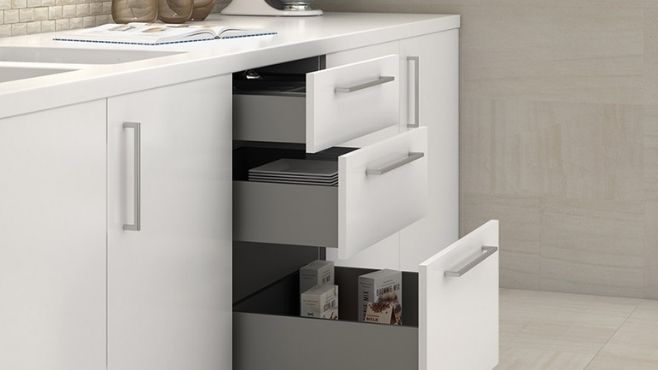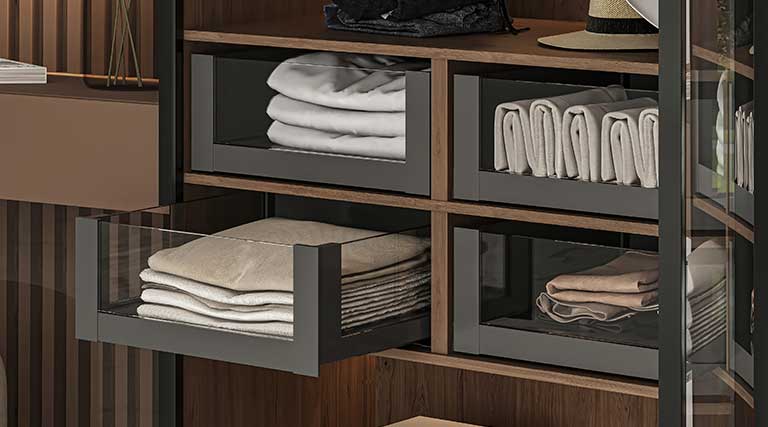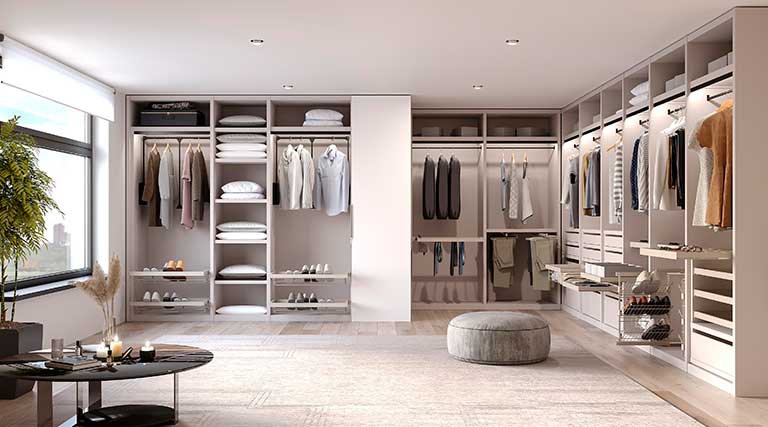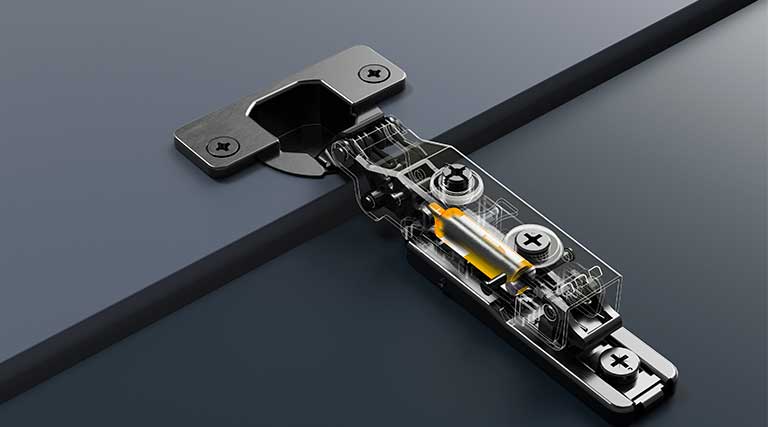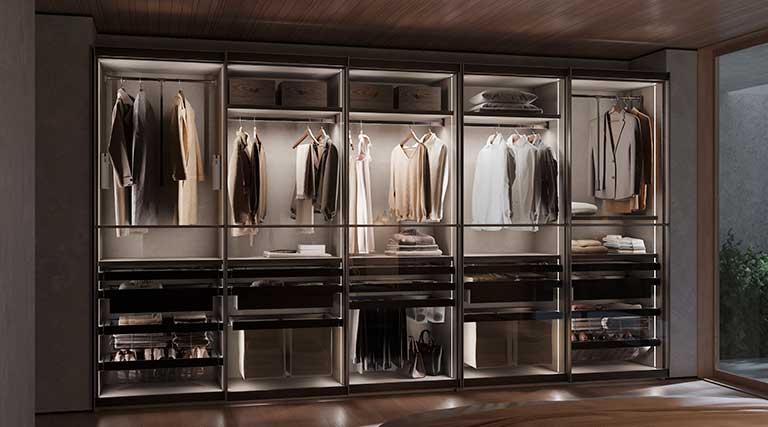Space optimisation is key for any project we start. The more we use all the available centimetres, the more practical, useful, comfortable and functional our project will be. Therefore, making the most of small spaces is essential. For this, from Emuca, we are going to focus this post on the different types of hinges and sliders that can be found in the market.
Let’s go!
Hinges and sliders, what’s the difference?
Projects with small dimensions need good fittings to allow mobility and flexibility in spaces and furniture.
For this reason, we will focus on the two main protagonists:
- Hinges
Furniture hinges allow doors, windows or panels of different types of furniture to rotate for easy access. They are articulated fittings made of two parts, one of which is attached to a sheet that allows circular movement.
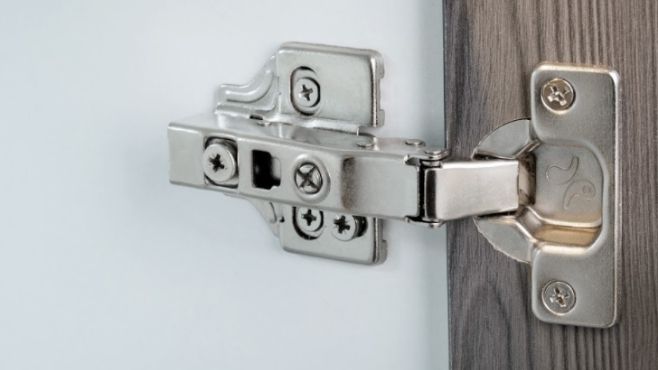
2. Sliders
The sliders are used for sliding and allow full accessibility. They are especially suitable for doors or windows and facilitate vertical or lateral sliding with a rail or a groove.
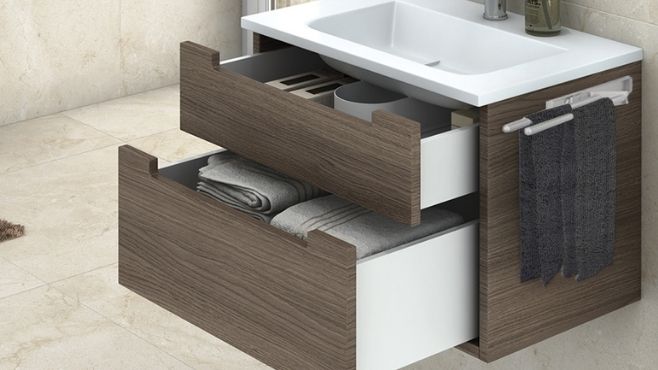
Types of furniture hinges that you can find
There is a wide variety of different types of hinges that will allow you to select and use the model that best suits the needs of each project you do. Some of them are:
Differentiation into 3 main groups:
- Straight hinges usually completely cover the side edge of the furniture
- Curved hinges, which partially cover it
- Super curved hinges, which allow the doors to fully open.
But, within these three groups, we can differentiate the following types of hinges:
- Book hinges
- Piano hinges
- Removable hinges
- Double Action Spring Hinges
- Bolt hinges
- Hidden hinges
- Cabinet hinges
- Cabinet surface mount hinges
- Glass hinges
- Special hinges, ideal for corner units, pivoting hinges for desks…
Different sliding systems to optimise spaces
Sliding doors can be made of wood, glass or metal. Below, we’ll explain which ones are available for you to optimise spaces to the maximum.
- One panel sliding doors. They are most commonly used for interior doors, especially in bathrooms, bedrooms or kitchens. A one panel door with horizontal movement that allows both directions.
They can be installed on rails or embedded in the wall itself.
- Sliding French Doors. They consist of two doors side by side Double sliding doors widely used in living and dining rooms which provide a very large opening. Ideal for making the most of small spaces.
- Sliding door + fixed panel. As a rule, the thin, glass sheet is fixed to the wall. The other is mobile and larger. They are used in passageways, dining rooms and lounges for the light and brightness they allow. Since it helps to create a feeling of spaciousness in the room.
- Parallel sliding doors. Each panel is on one side of the wall. Ideal for living rooms, dining rooms and kitchens.
- Corner sliding door They are not very common in homes, but they are common in offices. The door sheets are recessed in the corner and the apex of the corner itself is used as a lock.
- Telescopic sliding doors. They are the most common at home. They go from floor to ceiling and, as a rule, the panels are made of some kind of wood and veneer.
- Folding sliding doors. They are usually used outdoors and their mechanism is very simple, since they fold on themselves. The most commonly used material is glass, although for large dimensions it is wood.
- Stacking sliding doors The method of the stacking sliding doors is very similar to the folding sliding doors. But the big difference is that they are more similar to blinds, since the individual sheets are guided by a rail when folded, making it much easier to optimise space.
Tips for making the most of small spaces
It is definitely possible to make the most of small spaces and make the most of every room. Here are a few tips to make it easier for you to achieve this:
- Provide natural light
- If this is not possible, install well-thought-out and well oriented lamps.
- Always use! Sliding doors
- Separates rooms without dividing them
- Take advantage of the corners
- Get the most out of the walls
- Use movable furniture to improve the space
- Don’t overcrowd the space
- Includes storage elements
So, there you have it! Get to work and optimise the space you have available to create unique, practical, functional and unrepeatable projects.

